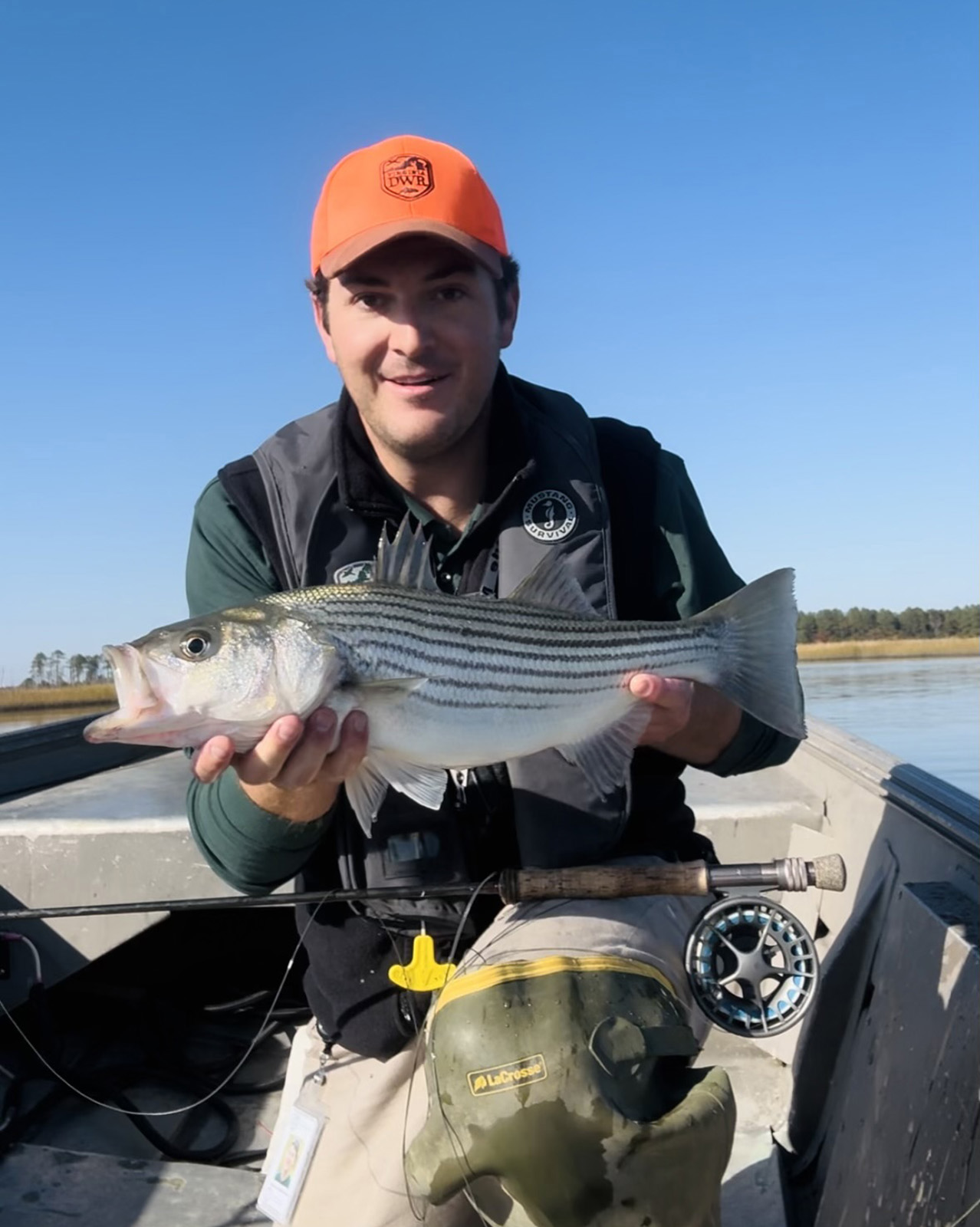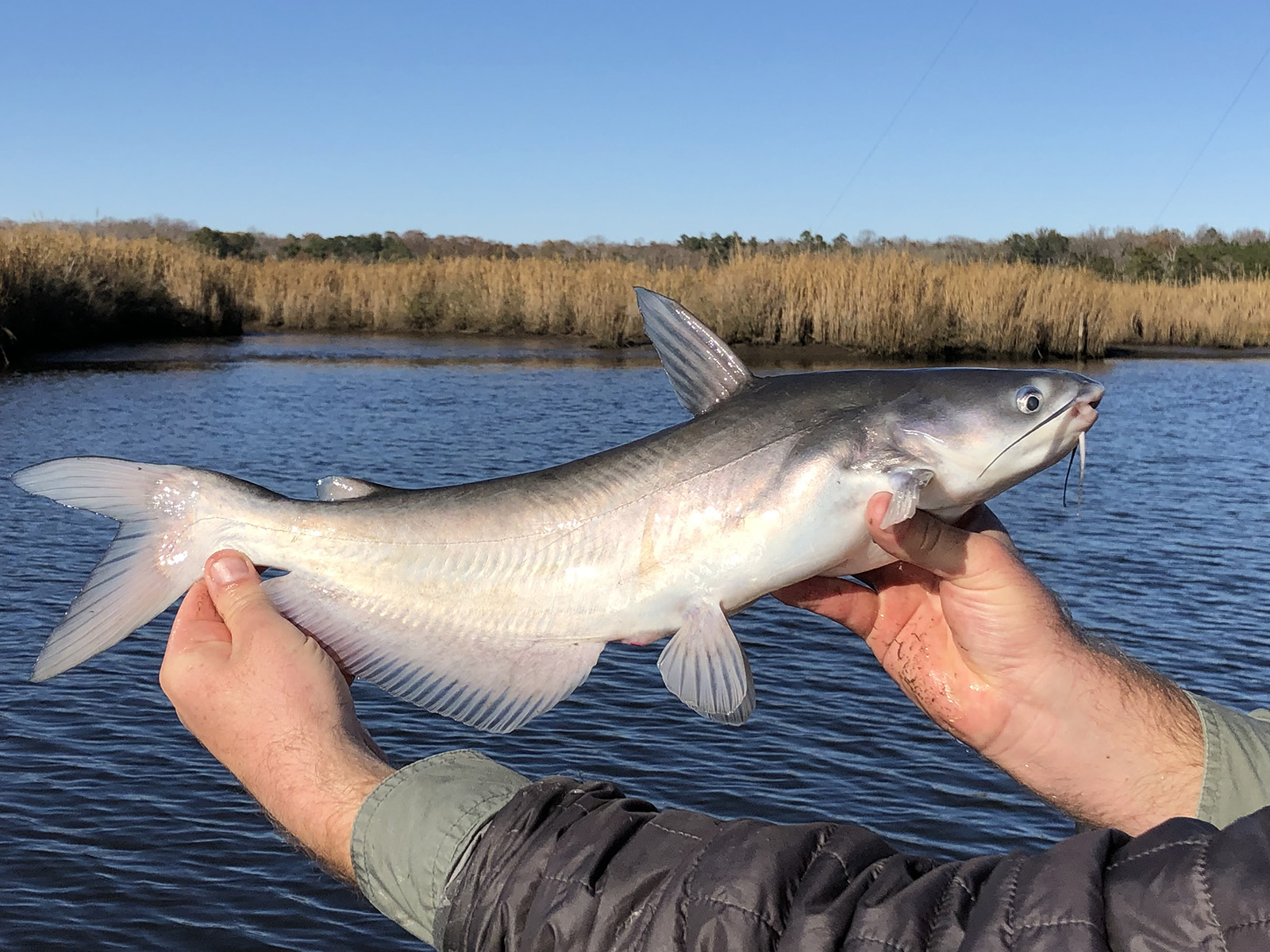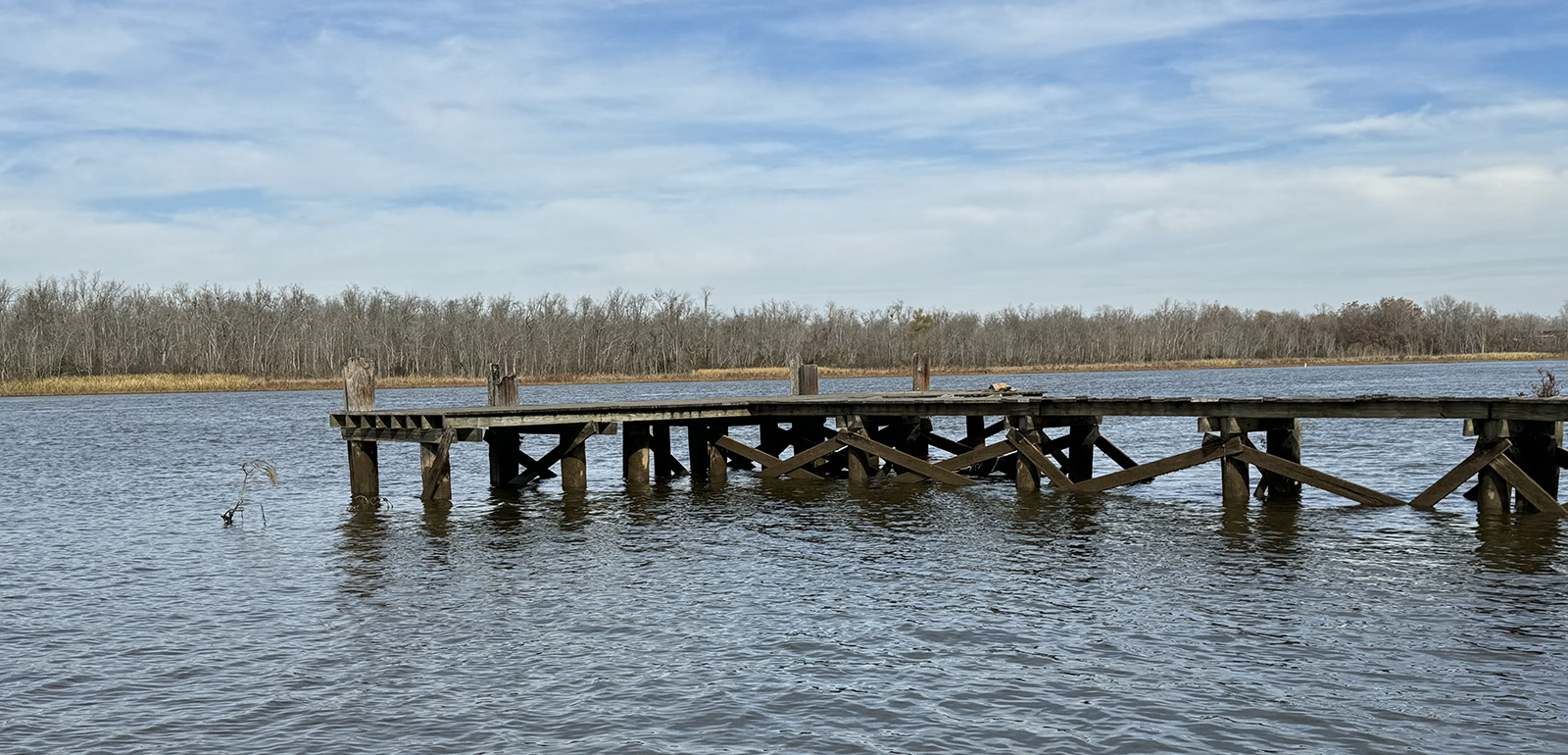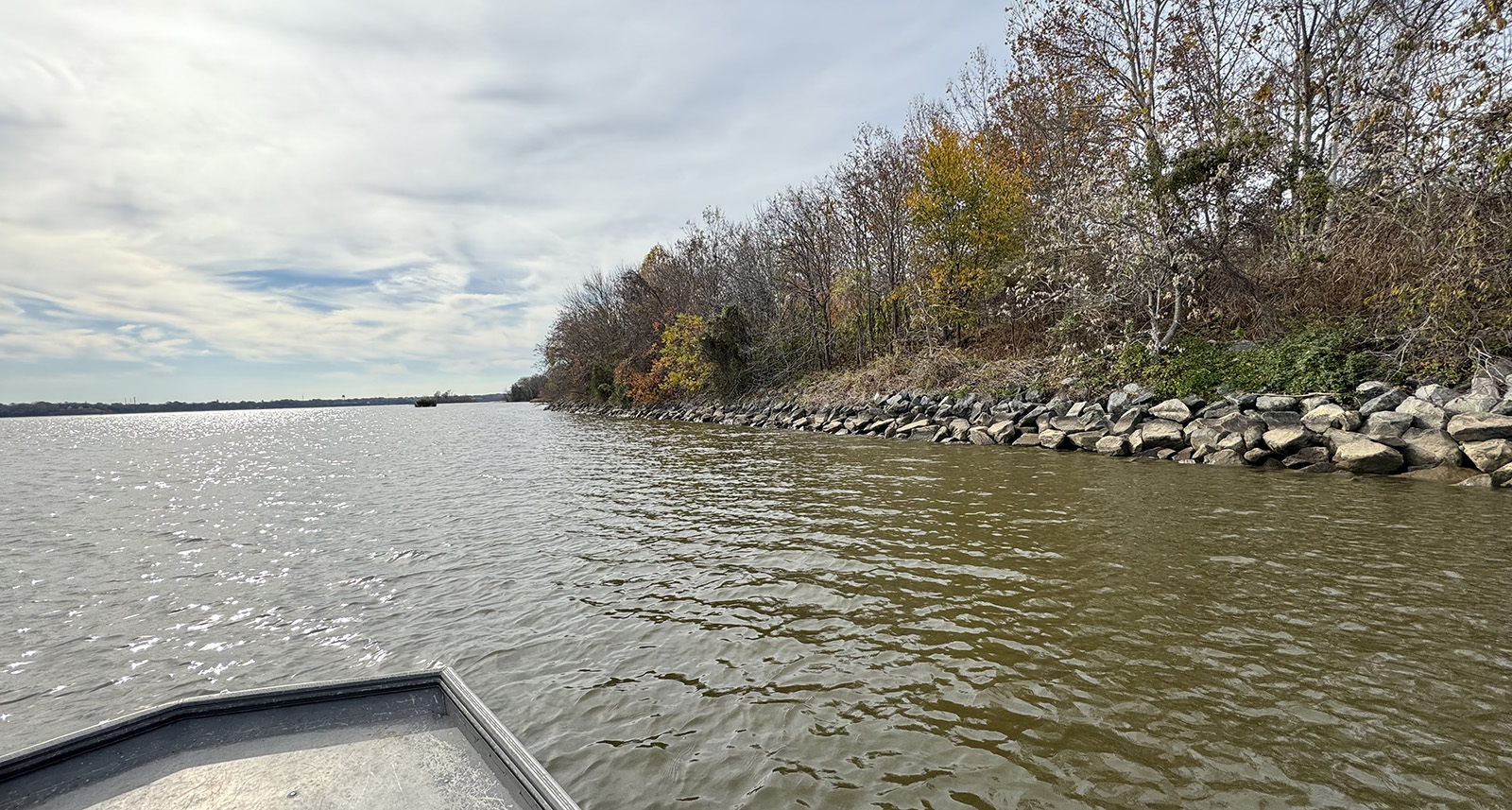By Alex McCrickard/DWR
Photos by Alex McCrickard/DWR
Are you tidal river curious? Maybe you’re interested in learning how to fish big tidal water but perhaps intimidated by its size? Early winter can be a peaceful time to explore Virginia’s tidal tributaries of the Chesapeake Bay. With the changing seasons, crowds can dissipate, but the determined angler will find that it is absolutely worth the continued effort.
Opportunities are plentiful along the western shore of the Chesapeake from the Potomac in Northern Virginia down to the James River and everything in between. These large tidal tributaries follow a salinity gradient where freshwater at the fall line turns brackish, with higher salinity concentrations the closer one travels down river to the confluence with the bay. Because of this, a wide variety of species can be targeted on these tidal rivers from largemouth and smallmouth bass near the fall lines to blue catfish, white perch, yellow perch, striped bass, and even speckled trout and puppy drum the further one travels downstream.
The amount of water you could cover on these tidal rivers can be daunting and it is often hard to know where to start. However, I have found that by focusing time and energy fishing these four distinct habitats, I will more often than not be catching fish no matter what tidal river I am in.
- Points
Fishing is all about being able to read the water. This holds true for ponds, lakes, creeks, and flowing rivers. Tidal rivers are no exception and, more often than not, points, where a narrow piece of land just out into the water, can be a great place to locate fish on these large systems. Points are often on the inside of a river bend or at the confluence of a smaller tributary. Points tend to act almost like a funnel, concentrating fish that are moving up and down with the tides. If fish are near the shore, they have to swim out and around a point to continue up or downriver. Setting yourself up on a point can allow you to intersect fish at an area where they tend to concentrate.

This Virginia rockfish came out of a river bend in deeper water across from a point.
I like to fish a point methodically while drifting with the tide. I will often cast toward the point and retrieve the lure or fly back to the boat. Often, there will be a current seam where the tide is pushing flow around a point and a back eddy forms. Casting into the back eddy of the point and retrieving your presentation through the slower water and back into the current seam can often produce a strike.
On the opposite side from the point, there will many times be a bend in the river. Depending on the depth and flow, fish will tend to stack up in the deepest section of the river across from the point. Utilizing your electronics and mapping capabilities can be extremely useful in these situations if you are fishing from a boat.

This “eater-sized” blue catfish fell for cut bait fished on the bottom off a tidal river point.
- Creek Mouths
Creek mouths are also a great place to locate fish, particularly on an outgoing tide. Fish will often stage at the confluence, where a smaller creek enters a bigger system. The strategy here is for the fish to position themselves in ambush mode, ready to strike whatever the ebb tide flushes out of a creek. Further upriver on our tidal systems, I would be focused on targeting largemouth bass, blue catfish, and striped bass waiting to ambush spottail shiners and gizzard shad in this scenario.
Give me the same scenario lower down on the tidal rivers, closer to the Chesapeake Bay, and I am focused on striped bass, speckled trout, and puppy drum waiting to ambush peanut bunker, bay anchovies, and Atlantic silversides. You’ll often find striped bass, speckled trout, and puppy drum concentrating in small holes or depth changes right at the mouth of a creek.
- Docks
Docks provide structure that simply attracts fish. As long as there is adequate water depth—at least two to three feet of water—docks are worth fishing around. The pilings provide reprieve from the current and act as ambush points where fish can wait for the tide to push food towards them. Docks also provide shade, which can be extra cover for fish on bright days. I often position myself just off a dock and let the tide drift me alongside it. Casting lures or flies up against the pilings can draw strikes.

Casting along dock pilings can often yield results.
- Rip-Rap and Jetties
Rip-rap banks and rock jetties are magnets for fish. They offer safety and cover for predatory fish in addition to providing great ambush points. Striped bass, locally known as rockfish, are particularly attracted to this type of hard structure. The point of a rip-rap jetty can be a great place to drift with the tide. Cast toward the rip-rap and let your lure or fly be taken with the current along the rip-rap. A steady retrieve off the rocks can be quite effective. If you can locate where a strong incoming or outgoing tide has created a current seam off this type of structure, you will often find fish. Anywhere you can locate fast water meeting slower moving water or slack water is worth a cast.

Rip rap banks are good places to prospect for fish.
As you explore a new section of tidal river that you have never fished before, focusing on these four habitats will at least give you a starting point. Like anything in fishing, it takes time on the water to learn patterns. Some spots might fish better on an incoming tide and others might fish better on an outgoing tide.
Additionally, I always research a stretch of river that I have never fished before launching a boat. Check the aerial satellite imagery online and look for points and river bends, creek mouths, docks, or rip-rap jetties that might be intriguing. Then look at a depth chart to see where the channels are and locate any navigational hazards in addition to looking at the depth around these various habitats.
Always wear your lifejacket and always follow coldwater safety protocols during this time of the year.


